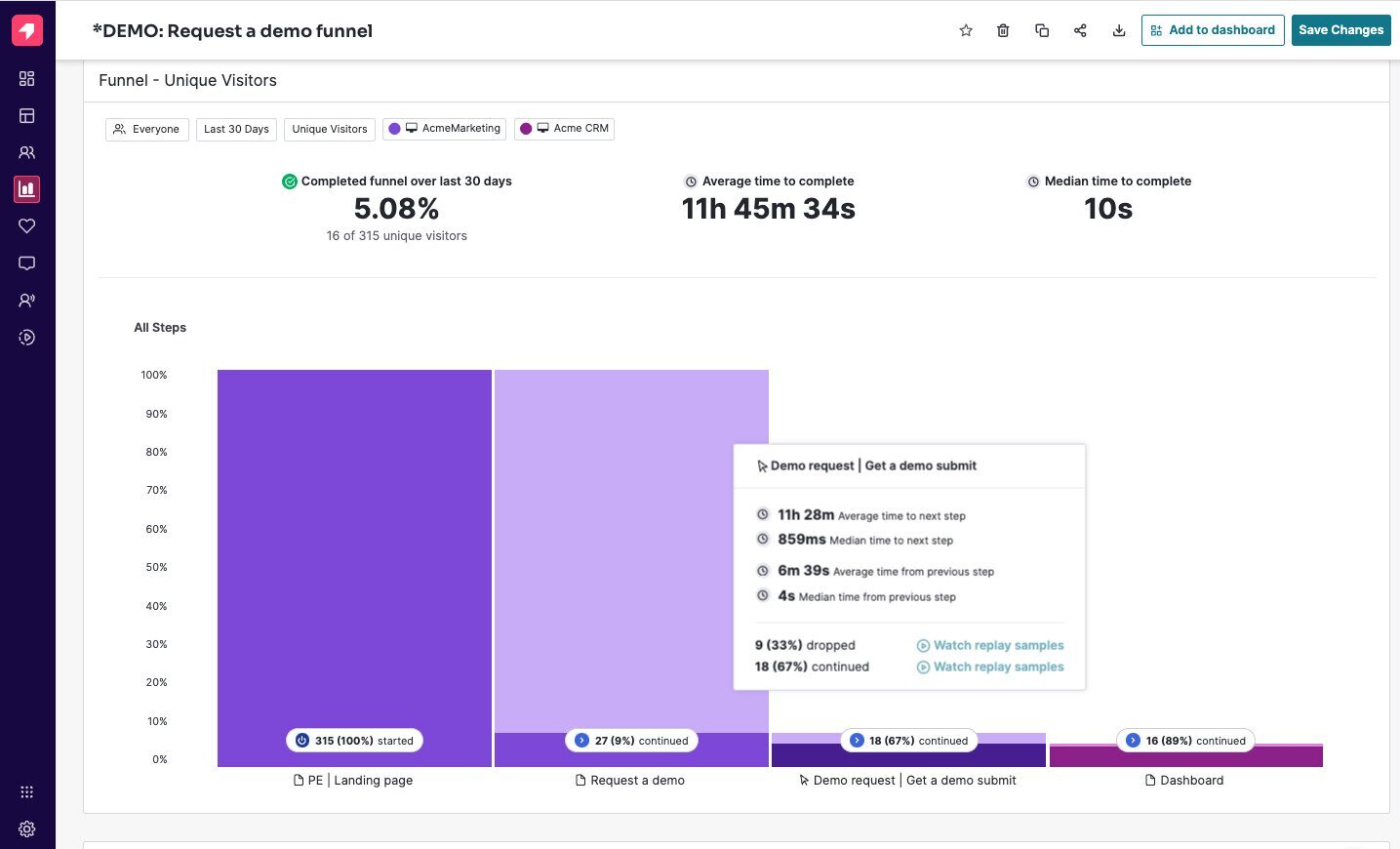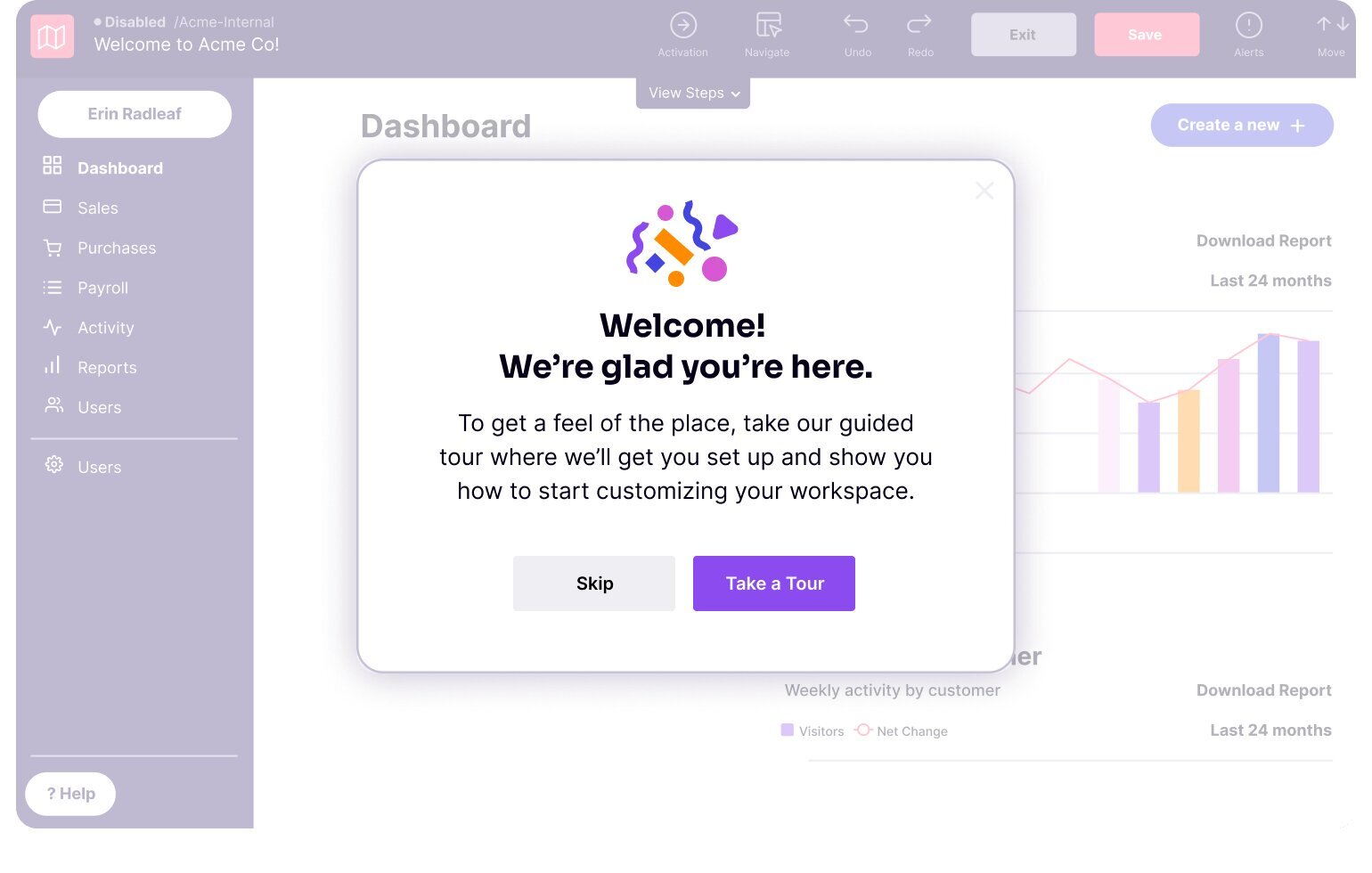A Director of Product Growth recently shared with me, “Marketing owns the website. Product owns the platform. And growth lives in the middle.”
This age-old data gap between marketing and product’s view of the customer journey is why it’s so hard to drive new user sign-ups and maximize digital onboarding. In his words, this disjointed data is the bane of his existence.
But it doesn’t have to be this way. 75% of software buyers now prefer a rep-free sales experience, and companies are leaning on product-led growth (PLG) strategies to attract and acquire new customers. This is a collaborative effort between product and marketing, and improving the customer experience (CX) takes teamwork.
Unfortunately, most teams don’t have a shared, continuous view of their customer journey.
プロダクトアナリティクスのスキルと専門知識を深めましょう。(英語)
Why you need unknown-to-known user tracking for PLG
The customer journey starts long before a user logs into your digital product. Rather, prospective users see your website, emails, desktop app, and mobile app as components of an overarching experience. In a perfect world, all of those touch points come together to deliver a connected, valuable CX.
But if part of this user journey lives within marketing, and the other half is siloed away in product, companies will always struggle to achieve PLG.
What’s the missing ingredient to map your full customer journey? Unknown-to-known user tracking.
Pendo’s identity mapping connects non logged-in user activity (e.g. website visits) with known user activity (e.g. guide engagement) so product leaders can supercharge new user acquisition, activation, and retention. Here are three ways to achieve PLG with identity mapping.
1. Increase conversions by optimizing your customer acquisition
At most companies, marketing tracks the customer journey up until a visitor requests a demo or creates a new profile. Product teams don’t see anything until a user is fully logged-in, leaving a critical blind spot. This means teams have no way to measure how many website visitors become fully onboarded, retained, and paying customers.
How can your Director of Product Growth know what to improve in the registration or onboarding processes, if he can’t even see where users are getting stuck?
With identity mapping, teams have the tools to measure conversion rates for each step of the customer journey (like funnel reports). Then, they can uncover key insights like:
- The conversion (or completion) rate for all users entering the journey
- Where visitors are dropping off or getting stuck
- What percentage of new users become active, retained customers
Pro tip: Use Pendo AI to optimize your customer journey
To enhance your customer acquisition process even more and skip over analysis, let AI do the work for you. Pendo AI’s Journey insights answer questions about your top user journeys, like:
- Which journey is most common? What’s the most time-consuming step in this journey?
- Which journey requires the fewest steps?
- Which journey is the quickest to complete?
Pendo's all-in-one product experience platform is powered with AI.
2. Identify which content leads to the most registrations
When product and marketing leaders can connect what users engage with before and after logging in, they can answer the questions: What’s retaining the most new users? What’s not working? Marketing teams can hone in their focus on high-value content, increase acquisition, and efficiently use resources.
If your blog on AI for Product Led Growth is driving the most demo requests, your markting team should increase its visibility on the website, promote this via email, and launch an In-app Guide on the website that directs users to the blog.
3. Tailor onboarding experiences based on pre-login activity
Understanding what users are engaging with before registering doesn’t just help marketing teams, but product leaders, too. Users expect personalized experiences, and identity mapping is one key to act on this.
User onboarding is such a limited window to train, activate, and retain new users. Onboarding experiences often start with a survey asking users what they want to explore first, or what their goals are. Seeing what users engage with before logging in gives even more insight into what they’re looking for.
The faster the new user’s time to value, the more likely they’ll become a loyal, engaged customer. As that same Product Growth Director said, “The closer product and marketing teams are, the better the customer experience.”
If you’re focused on PLG at your company, don’t leave your team’s success up to chance. Bridge the data gap between product and marketing to view the full customer journey and increase acquisition for your business. Request a personalized demo to see how you can map your full customer journey.






